Flagstone patio ideas: 11 ways to add one to your backyard
These stylish flagstone patio ideas are a great way to give backyards big and small the focal point they deserve
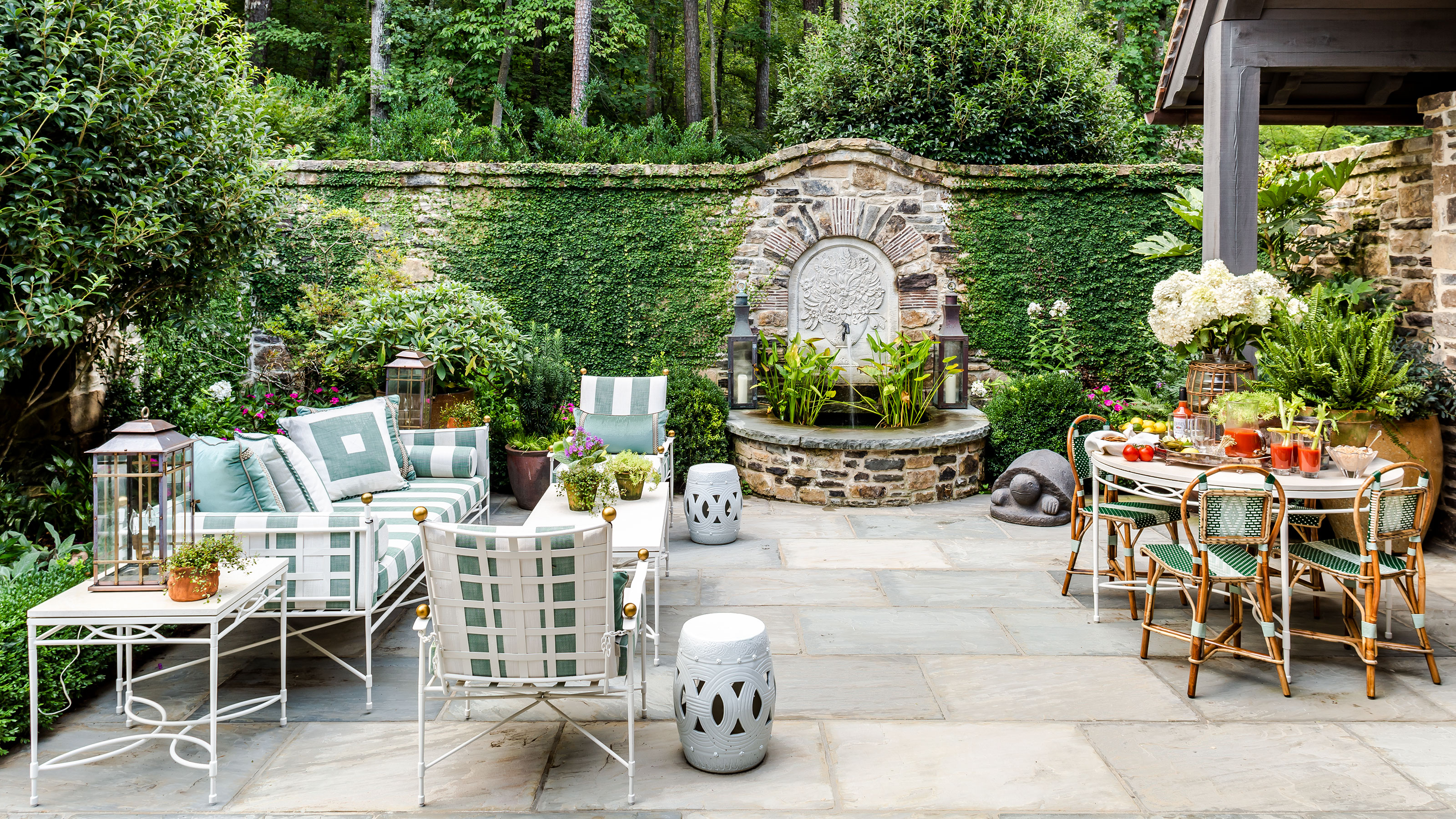

Flagstone patio ideas can be as contemporary as they are traditional, so they offer plenty of style options if you're looking to switch up the look of your paved space this season.
A flagstone patio is one of the biggest investments you can add to the hard landscaping of a garden, so it is important to get your choice right. Once the patio is laid it will be there a long time, so take your time in making decisions on size, color and the design of the flagstones.
The good news is there are so many types of flagstone to choose from for your patio ideas, including solid traditional stone, bringing with it warmth and character, granite for a sleek and sophisticated contemporary look, and hard-wearing, relatively inexpensive Indian sandstone, which comes in a range of rich hues, from variegated shades of Kandala Grey to mossy Raj Green.
'Natural stone is a classic choice for a flagstone patio, it’s long-lasting and the natural variation between slabs makes for a more interesting finish,' says Johanna Elvidge, head of domestic design at Marshalls. So we’ve pulled together practical advice and inspirations from the experts to help you make your choice.
Create a space to relax and entertain with these flagstone patio ideas
Every garden needs a beautifully functional area of hard landscaping to accommodate tables, chairs, sofas, and the barbecue, of course. So take your pick from these stylish flagstone patio ideas and make the most of your outdoor space.
1. Use a flagstone patio to pull together different zones
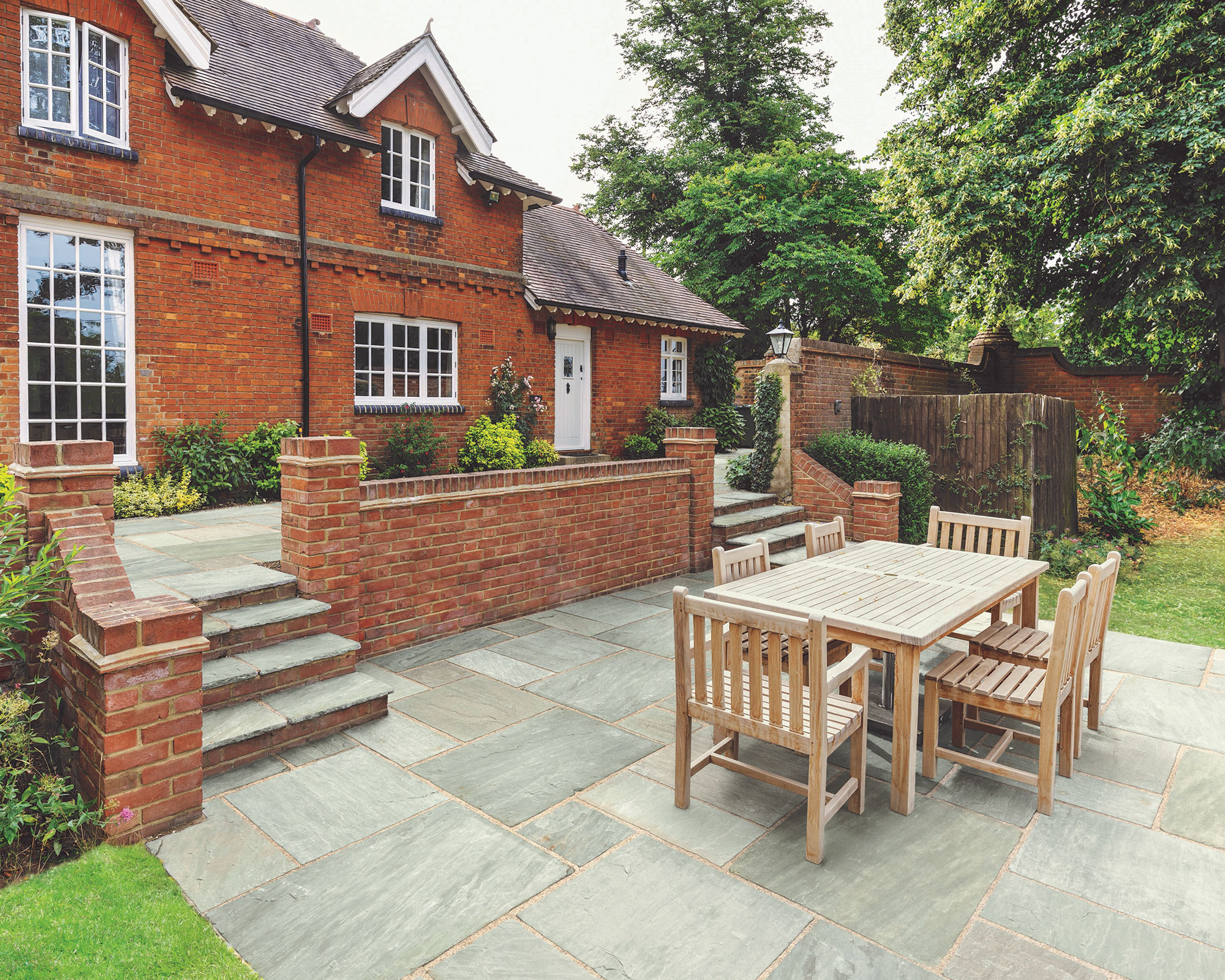
Link different levels by using the same flagstones in both spaces. Fairstone Antique Alverno flagstones from Marshalls
If your garden has several areas which appear disjointed and at odds with each other, opting for a split-level patio laid with the same colored flagstones will pull them all together and create an impressive multi-layered outside space.
'If this is the case, you’re using paving to create a "whole" space,' says Gary Brace, managing director of paving suppliers Primethorpe Paving. 'This works best with rustic, buff or earthy colors, as these are what are commonly found in natural settings. Opt for slabs that blend a few different shades through them. This helps the space have more cohesion, creating a more natural finish.'
2. Go for random-shaped flagstones for a unique look
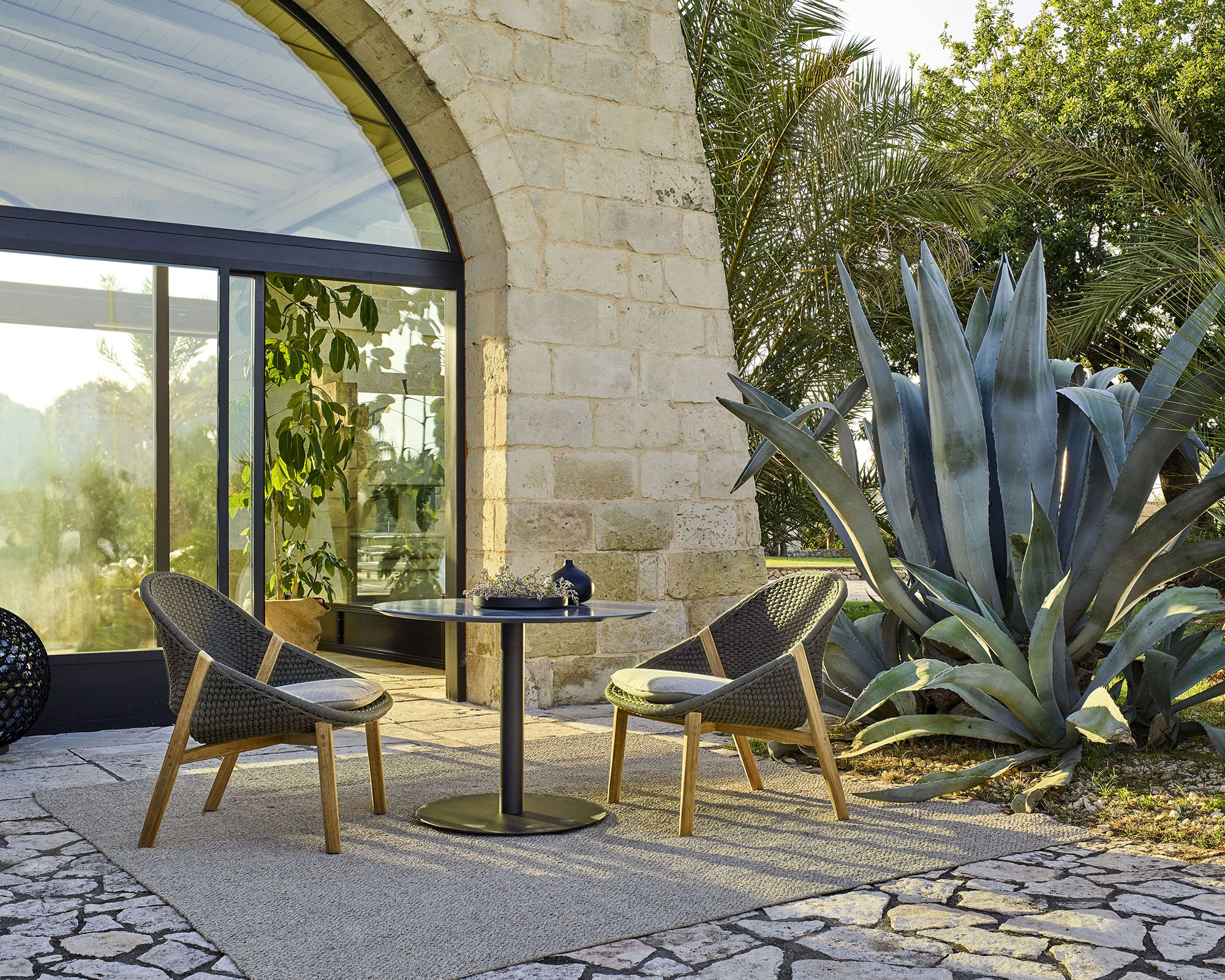
Installing a new flagstone patio can be a great opportunity to add character to a space. Tribu Elio furniture from Go Modern
Flagstones don't have to come in squares and rectangles. If you’re keen to create a natural look, choose patio materials in organic shapes and lay in a random fashion for a DIY patio idea with a difference. Use a natural material – such as rammed earth – for the joints, and either embrace the self-seeding annuals and weeds that will make them their home, or pull errant stray plants regularly.
A natural scheme is a good way to make use of recycled and reclaimed pieces of flagstone, which can even be mixed in with other materials such as attractive shards of pottery or glass.
The random effect of this patio paving idea is probably best confined to small spaces. You can really concentrate on getting the design just right in a confined space. And a larger area – unless your garden is enormous – could overwhelm the eye.
When adding an outdoor rug to such a bold design feature as this, it's best to go for quite a plain rug (dark gray rugs are a smart choice, readily available from Amazon), as a heavily patterned design could be too much for the space.
3. Create a neutral background
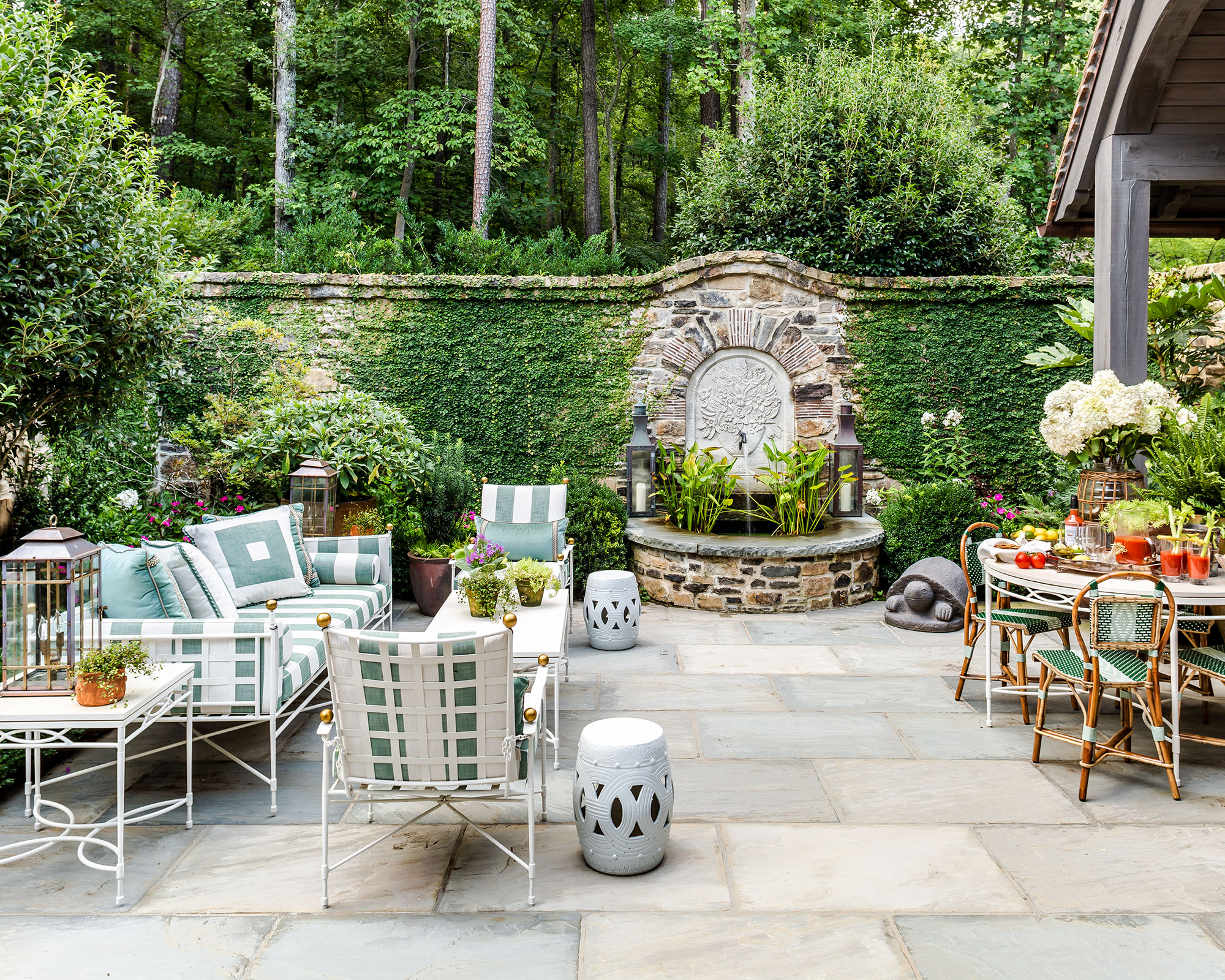
Let other key features in your backyard stand out by opting for subtle colors for your flagstones
When there’s a lot happening in a garden, with a multitude of textures including existing stonework, it pays to play it safe with the flagstone patio by treating it as a backdrop rather than the main event. Opt for a neutral look, with toning joints between the flagstone slabs. You want to be able to appreciate its quality not shield your eyes because it clashes with the walls.
In this large backyard, opting for a neutral colored stone helps to link the seating area and the main dining space underneath the patio cover.
'The great thing about flagstone patios is that from York stone to slate, sandstone to granite, there’s plenty to choose from,' says Johanna Elvidge. 'Base your color choice on what works best with the style of your home.'
4. Make a flagstone patio a low-maintenance focal point
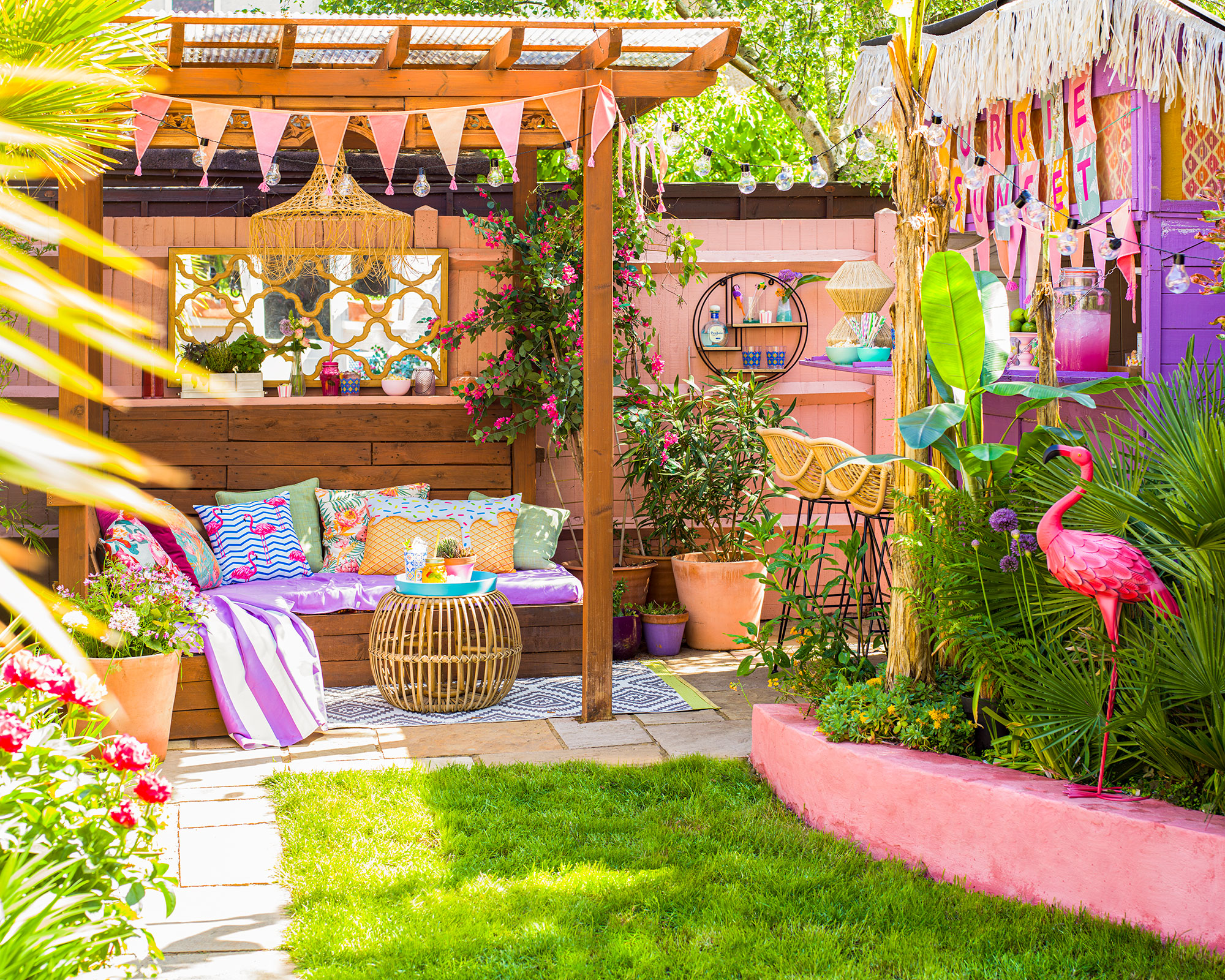
A flagstone patio is a great centerpiece in a small space. Accessories from Wayfair
Including flagstone patio ideas in your plot can be a sensible choice if you're a fan of low-maintenance landscaping. It makes looking after your outdoor space so much easier, because obviously a significant portion of the ground area is taken up by hard landscaping. And in compact backyards like this one, even a small patio can often become the central feature of the garden.
However, you can design a flagstone patio that doesn’t have to dominate visually. 'Landscaping for functionality doesn’t mean throwing your current landscaping theme out the window,' says Bruce Read, director of suppliers Paving Superstore.
'There are so many ways to make this new area work with your existing garden design ideas. With choices including limestone paving, cobble sett, sandstone, and all kind of paving slabs, it’s just about choosing something that both sets off your garden furniture and will stand the test of time.'
5. Select softer shades for a subtle look
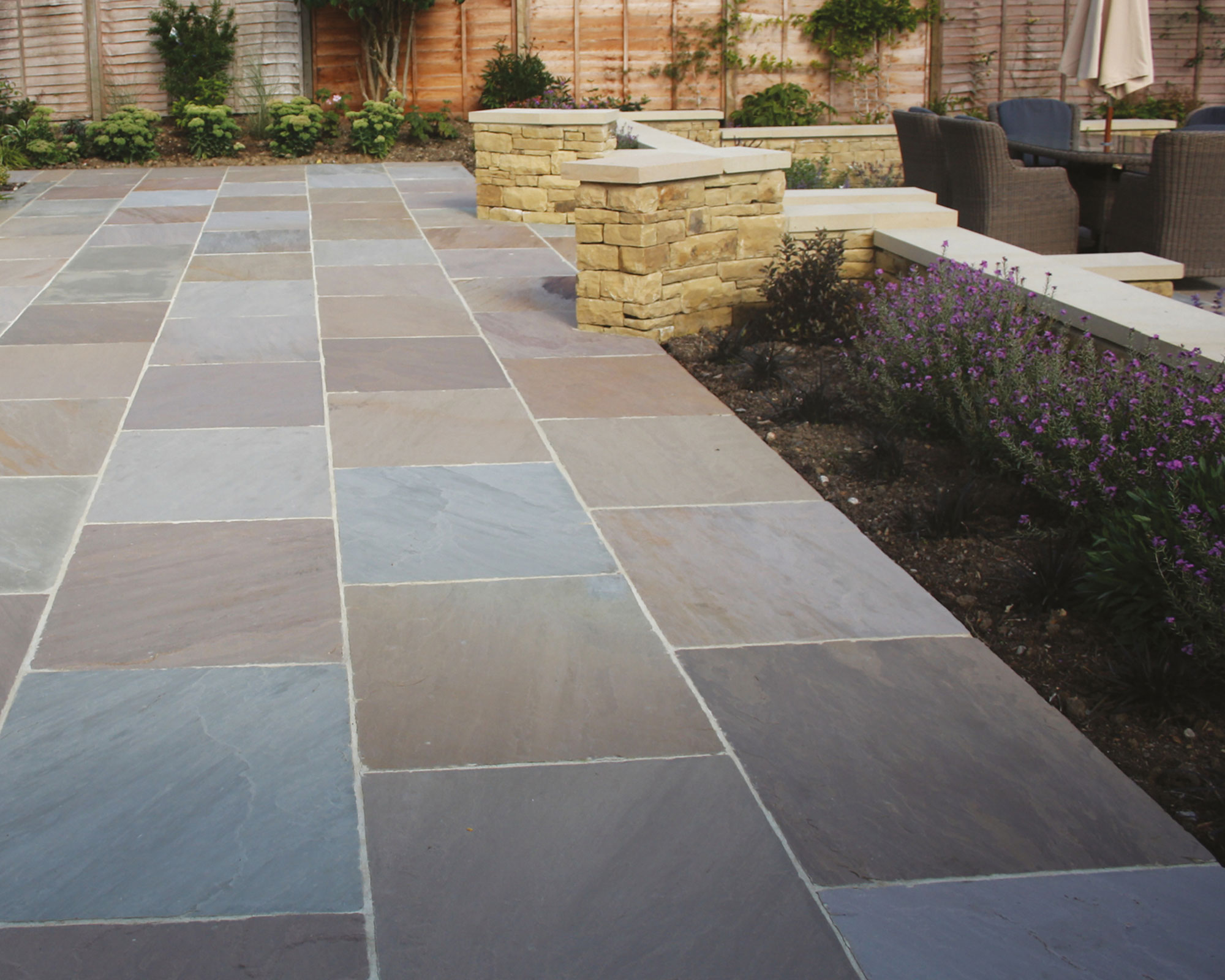
A mix of different colors can create a striking effect. Talasey Natural Indian Sandstone Classicstone from Jewson
Harmony is easy to achieve with your flagstone patio if you look for inspiration in the established surroundings, including brickwork, stonework, adjacent or related interiors and permanent planting.
'With some projects, it doesn't really matter about the specifics of what kind of flagstone material you use, it's just all about the color,' says Gary Brace. 'It’s important to choose a color that works with not only your garden, but your home too, especially if the patio is next to, or can be seen from, the house.'
So when you’re thinking about what color to choose, don’t simply look around the garden, but consider the view from windows and doors too. Will the color you have in mind sit well with your interior décor? If it seems impossible to match, focus on one interior shade which you can pick up and carry through to your new patio.
You might also choose two contrasting colors for your patio flooring. Gary suggests that a popular choice is 'an earthy-colored paving slabbed area, surrounded by dark-colored paving slabs'.
6. Edge a flagstone patio for a neat finish
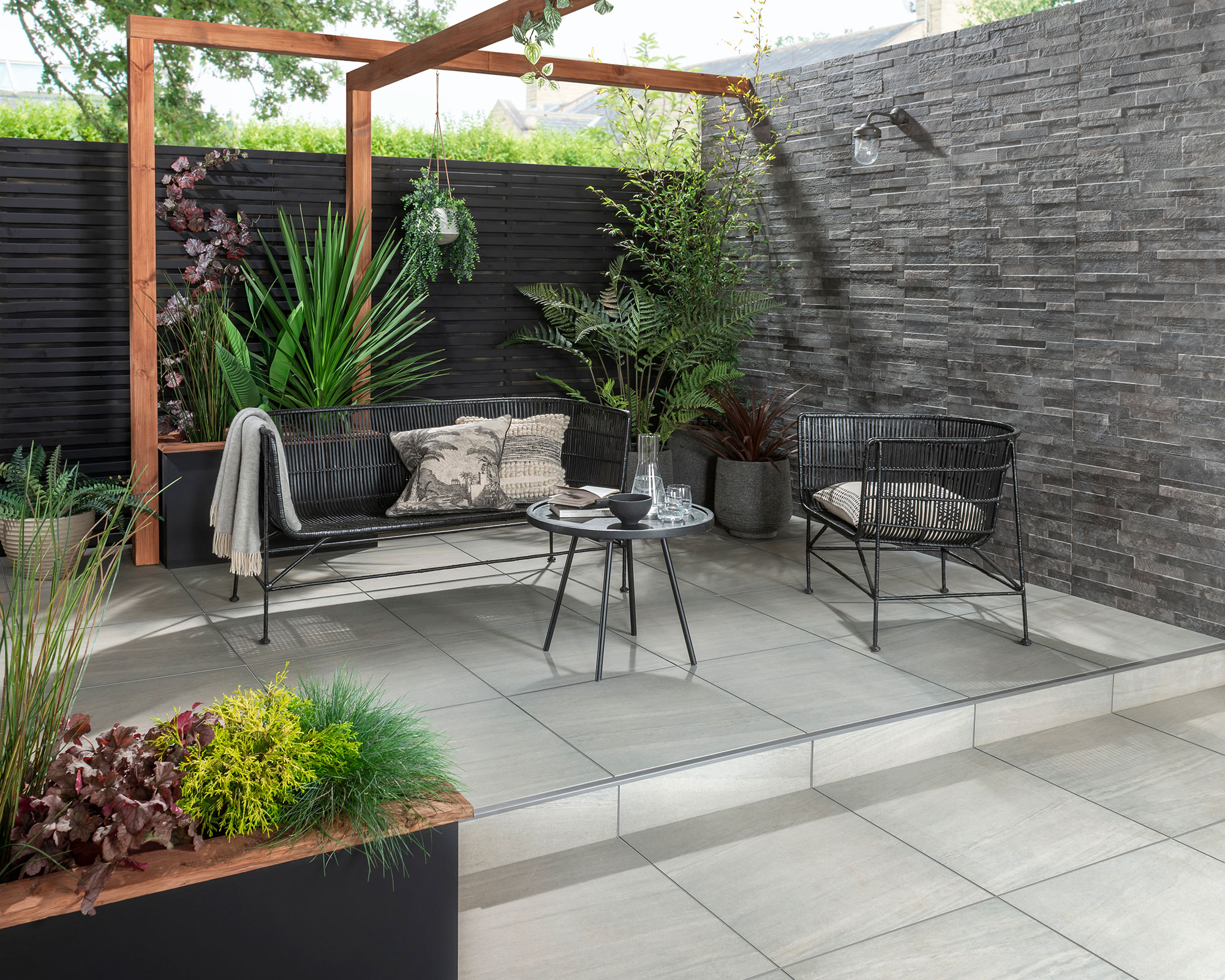
Don't forget about the edges of your patio when designing your space
A sleek and streamlined modern patio demands attention to detail at the edges. You will probably need to add an edging strip, perhaps in a smartly contrasting color, to finish off the look neatly.
If your smooth and contemporary patio abuts a lawned area, you should either lay the flagstones absolutely flush with the lawn – and this will help when it comes to mowing the grass – or use slightly raised patio edging ideas, such as kerbstones, to edge the planting, retain the soil during heavy rain and keep your paving clean, says Orla McGoldrick, consumer marketing manager at landscaping manufacturers Tobermore.
7. Embrace the evening vibe with darker tones
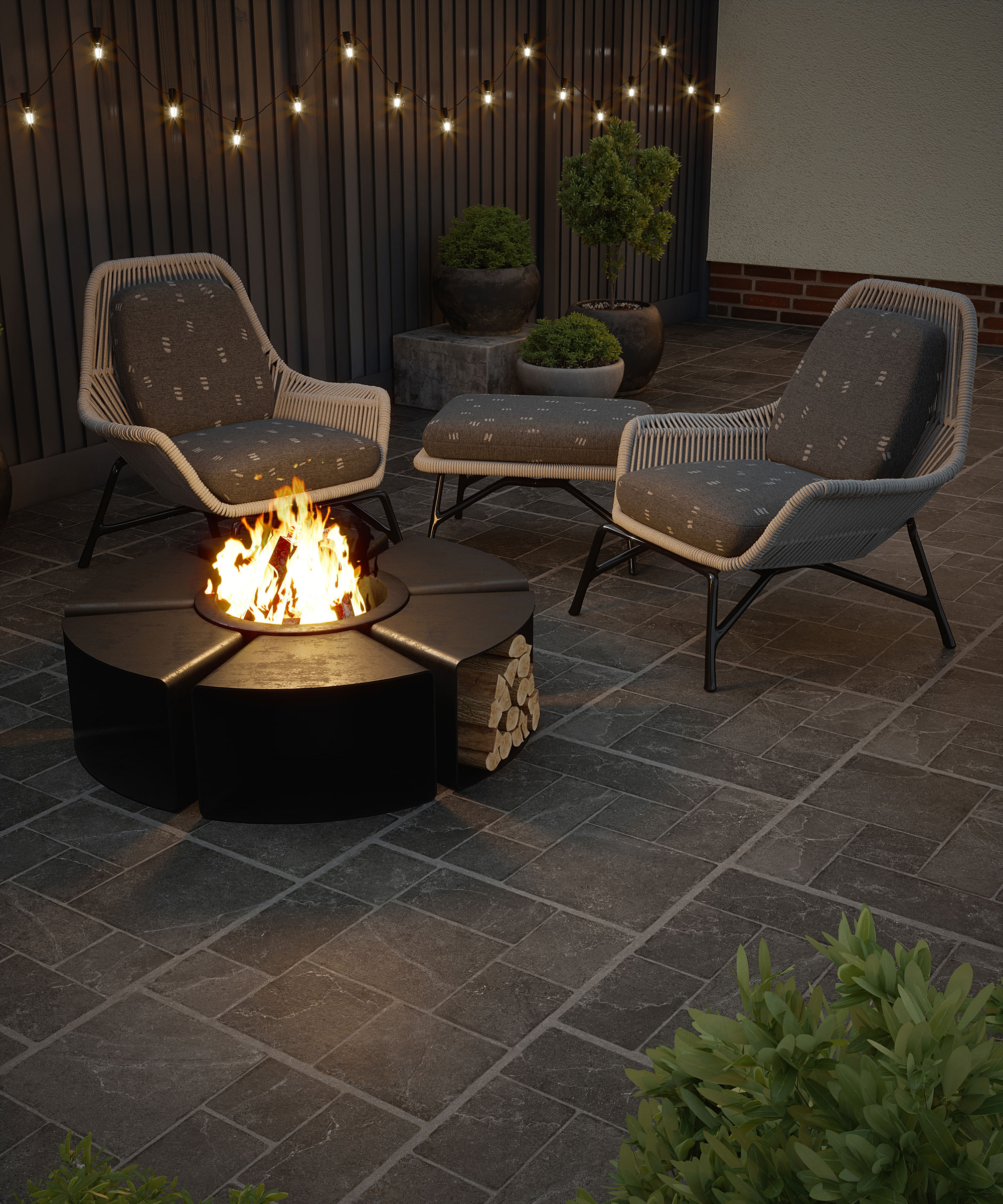
A flagstone patio can be the perfect spot for an evening entertaining area. Witton Noir paving slabs from Walls & Floors
When finalizing your flagstone patio ideas, think about how you want the space to look at all hours of the day and evening. If you spend a lot of time outdoors after dark, you should consider choosing a shade and texture of flagstone that will help to create a cozy patio feel in low light.
To maximize the light, opt for a flagstone with a slight sheen if possible – smooth slate will deliver this as it will reflect all available illumination from your patio lighting, such as lanterns, candles and string lights.
Adding one of the best fire pits will boost the atmosphere further. The Sunnydaze Black Crossweave large outdoor fire pit from Amazon would make an impressive centerpiece to your space.
8. Opt for oversized flagstones
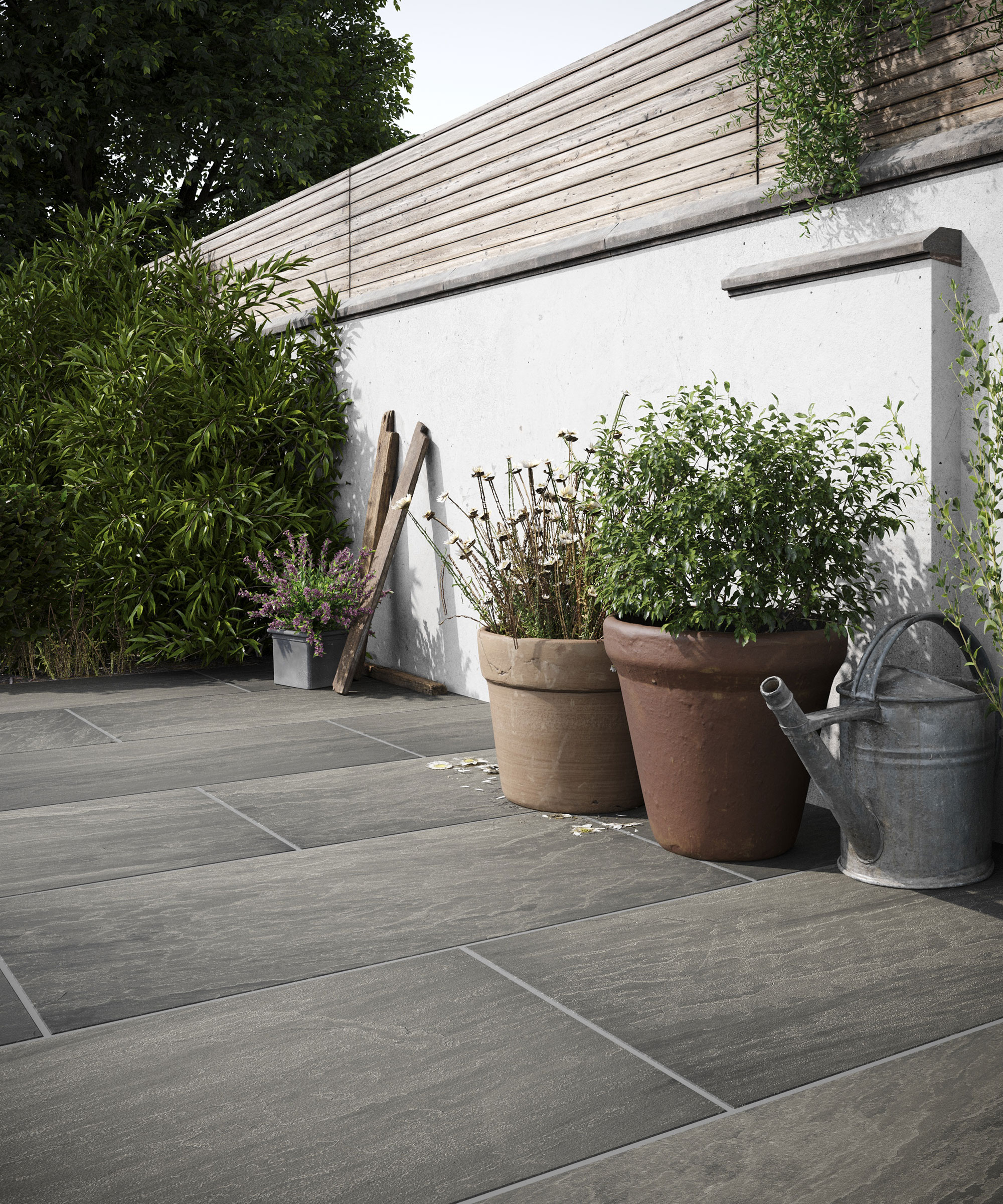
Large flagstones can create a sleek, modern look. Kandla Anthracite Sandstone tiles from Porcelain Superstore
To make a small garden look bigger, employ the trick of playing with perspective. 'Using larger flagstones for your patio can make the space look bigger and minimize cutting,' says Steve MacDavid, landscaping category manager at Jewson. 'Larger slabs also mean fewer places for weeds to break through, reducing the need for constant maintenance.'
You should also think carefully about choosing the best paver patterns to elongate and expand the space. If you want the patio to appear wider lay the flagstones in narrow horizontal bands to ‘stretch’ the eye. Longer? Reverse this approach to take the eye forward.
Using colored sand or jointing material to match the flagstone color will also make the space appear larger because it creates a seamless and unlimited effect.
9. Give a flagstone patio a lift with gravel
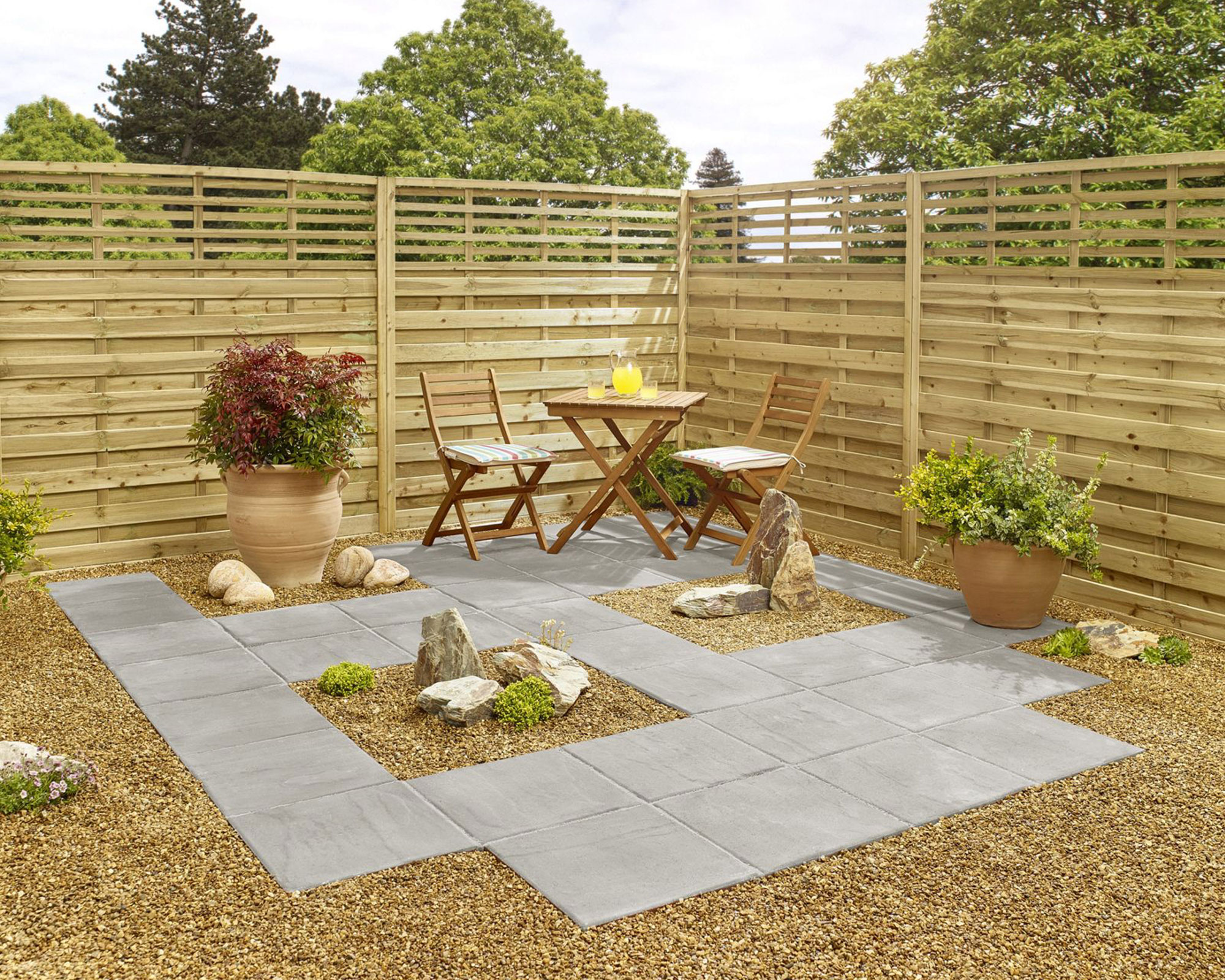
Flagstones and gravel make for a low-maintenance combination. Stylish Stone Hereford riven paving from Homebase
By landscaping with gravel and flagstones, you can bring interest to a larger patio and save money too. Adding areas of gravel within the flagstones is a good visual trick if you want to break up a big area, and each gravelled area turns into a mini soakaway too, so it will help with garden drainage.
Garden designer Nathan Gamba at Protea Gardens says you can also lay gravel in the joins between the individual flagstones: 'Using gravel in and around flagstones adds texture and contrast to the larger cuts of stone. If you lay down a porous membrane, gravel can also help suppress weed growth in between the flagstones.'
10. Increase the sense of space by raising the patio
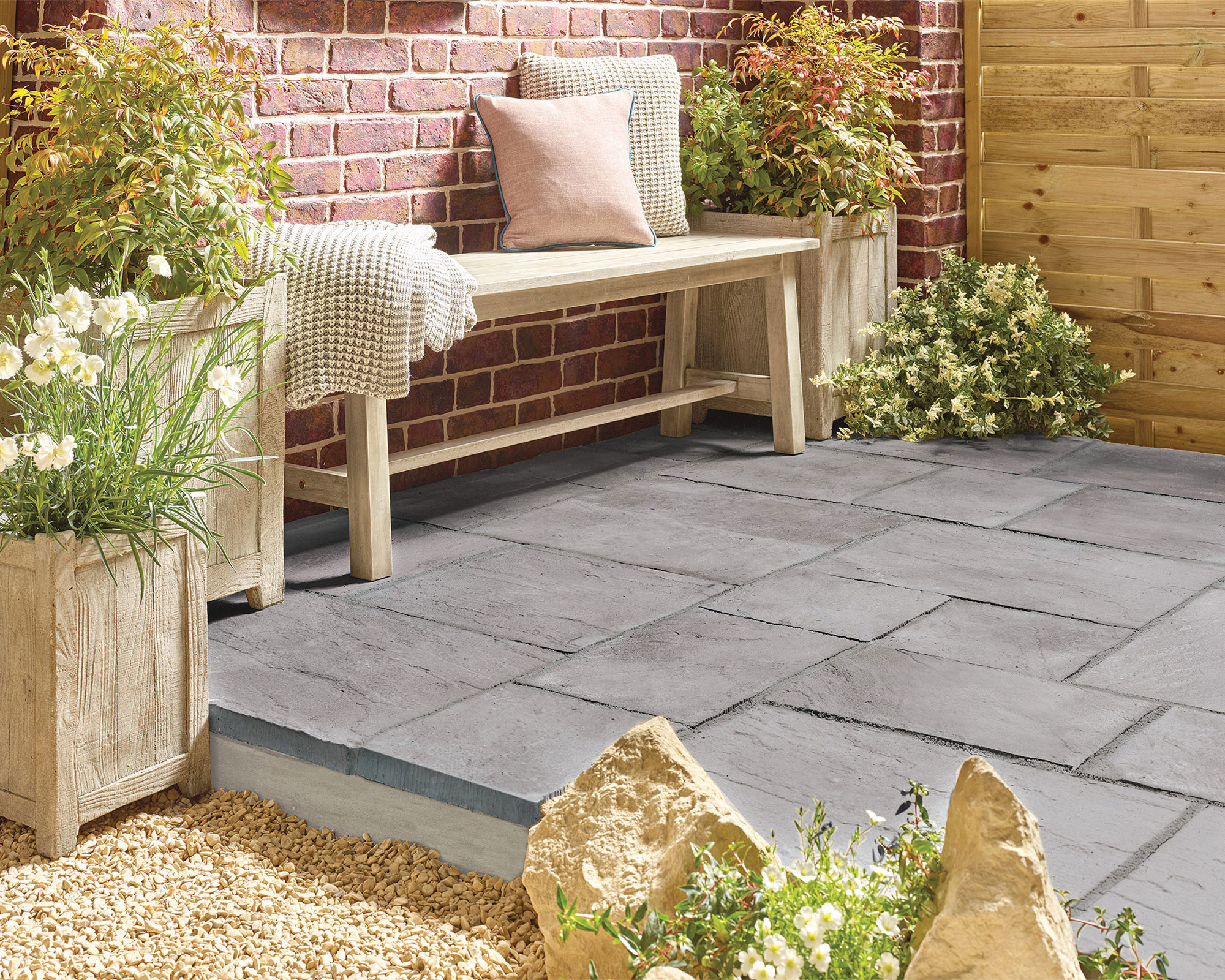
Play with different levels in a small space. Dark flagstones from Homebase
Raising the level of a flagstone patio by just a few inches can transform a smaller garden. The new level introduced will trick the eye into thinking that the space is suddenly larger.
It’s a nice idea to use a raised flagstone patio for an outdoor dining table and chairs, especially if you surround the area with attractive screening or slatted panels which can double as trellising.
'If you’re planning to do this, the size of the paved area needs to be no bigger than is necessary – which will help to keep the price down – but don't make a common patio design mistake and make it feel too cramped either,' says Jane Brownhill, garden designer at Longacres Landscape Ltd. 'Think about how much space you’d need to pull out chairs around a table and still be able to walk around it.'
11. Create a display area
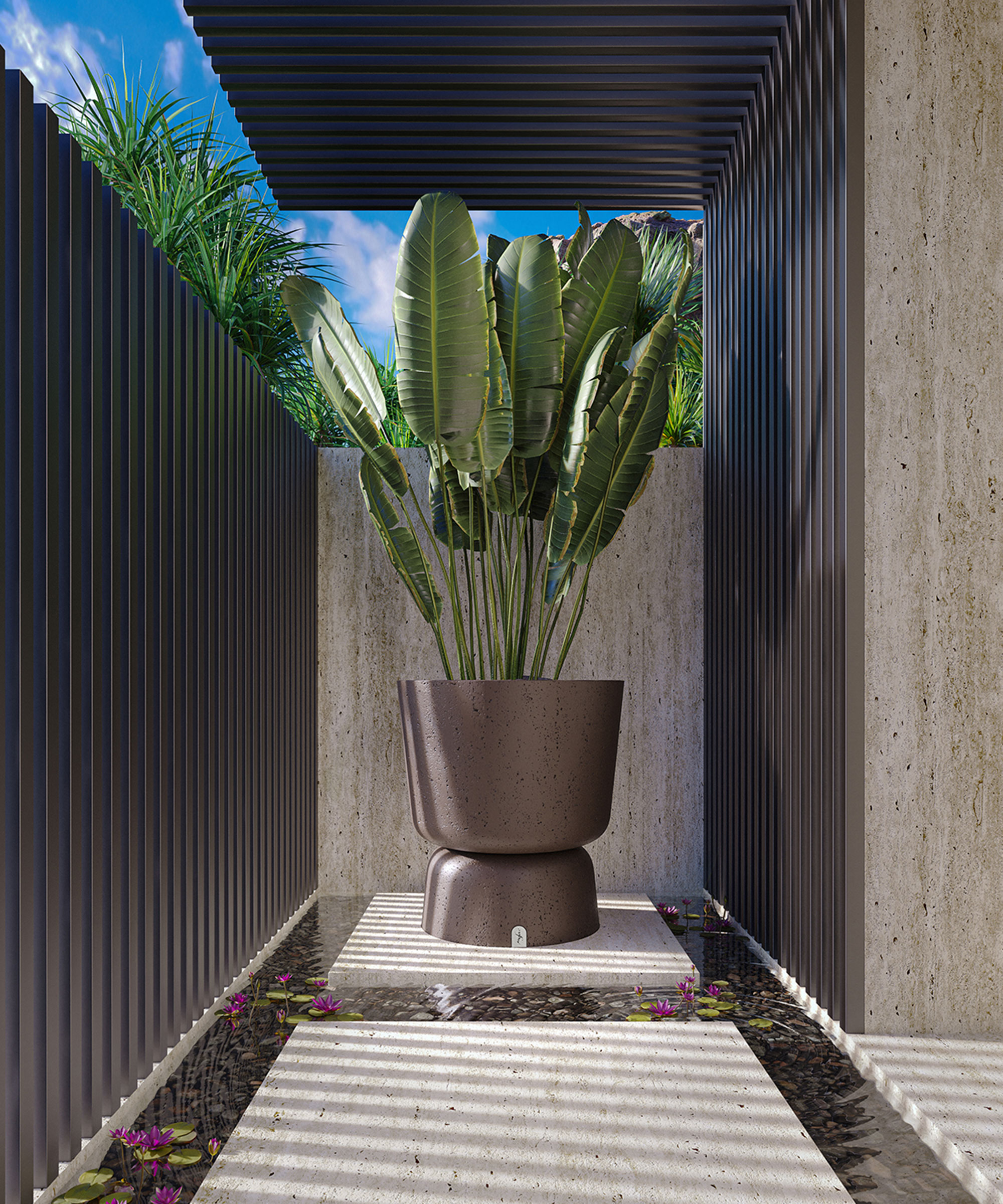
Use planters to make a feature of a small flagstone patio. Oversized planter from MyFace
A flagstone patio doesn’t have to be huge and expansive to make an impression. If your outside space is limited – or even a balcony garden – choose a contemporary flagstone to create a strong design impression.
'The most popular way to achieve this is to choose stylish shades of gray and darker coloured paving slabs,' says Gary Brace. 'The darker colors help to create contrasts, as well as highlighting any different colors that have been used in the space, drawing the eye to individual elements.'
In this design, the flagstone paver at the far end has been used to create a display area for a large urn-shaped planter and decorative tropical plant. The unusual edging around the edge of the flagstone is flowers under resin. Simple, but effective.
How can I save money on a flagstone patio?
If budget patio ideas are key for your space, always look for bulk-buy offers. It might actually work out cheaper to purchase a few more flagstone than you actually need to get the discount. Any spare flagstones can be used throughout the garden as a flagstone walkway or simply to adjust levels of plant pots. Most landscaping experts recommend including a 10 per cent margin of error to deal with awkward cuts and possibly breakages anyway.
Another cost-cutting trick is to intersperse flagstones with areas of gravel or pebbles. You can also look at the option of resin-bonded gravel; pea gravel ‘set’ in transparent resin which can’t be disturbed by animals or children.
Sketch out the design first to ensure that the paving will be in exactly the right place for tables, chairs, sofas and any large free-standing planters you’re going to arrange on your new flagstone patio. You can always pave over gravelled areas at a later date, but it can be a difficult job to uproot paving to replace with gravel or pebbles.
You can also focus the budget on buying the best flagstone for the main patio area, but reduce the overall amount required by choosing complementary concrete setts or sleepers for the edging.
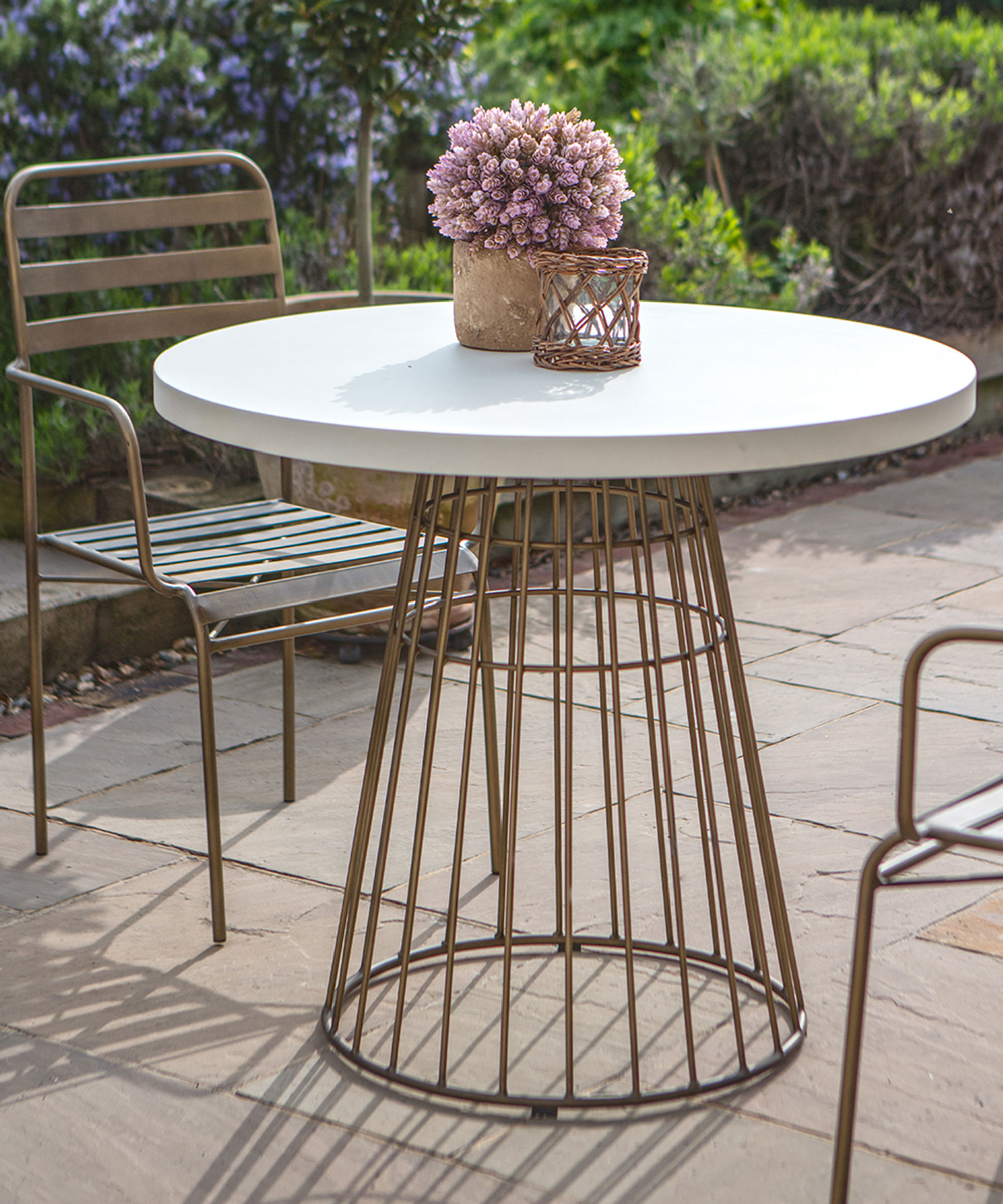
What's the best material to use for a flagstone patio?
The answer depends on the look and feel you’re trying to achieve with your flagstone patio, your budget, and, if you live in a region of extreme weather, how you hope it will weather the storms – and survive parties and entertaining of course.
'Stone is a natural product with character and a timeless quality,' says Jane Brownhill. 'Think about what kind of atmosphere you want to create. Consider how the patio material will look against the house. Get samples and look at them in different lighting conditions.'
As well as the color, consider how much use the patio will receive. Sandstone – including York stone – is very popular, because it comes in different shades and cuts well, so it’s good for circular patio ideas. However, like limestone, it’s porous and can discolor and stain if liquids are spilled on it, so it requires ongoing maintenance. Part of its beauty is its ability to wear well, but if you live in a region which experiences extreme cold and wet weather, it may wear quicker than you would like.
Slate is also susceptible to intense weathering, which will soften its glossy good looks. Indian sandstone, a cheaper equivalent to sandstone and limestone, tends to not be as thick and lacks the solid, traditional appeal of these established hard-landscaping favourites. However, the multi-shaded surface of Indian sandstone tends to absorb stains better. It’s available in smooth or riven (raised) finishes too, with the riven version considered more capable of shrugging off wear and tear.
Designer Lee Burkhill likes granite flagstones for patios: 'It is always my go-to natural stone for patios. First because it’s one of the toughest stones available, meaning it very rarely chips or gets damaged if things get dropped. Second, it's really slip-resistant, even in cold or frosty weather.'

Jayne Dowle is an award-winning gardening, homes and property writer who writes for publications including Sunday Times Home, Times Bricks & Mortar, Grand Designs, House Beautiful and The Spectator. She was awarded the Garden Journalist of the Year accolade at the Property Press Awards in 2021.
